Growing Lavender From Seed: Helpful Tips From Germination To Harvest
Medicinal herbsLavender is a fragrant perennial herb with beautiful purple flowers. The plant has been prized for centuries for its beneficial oil and blossoms. Learn how to grow lavender from seed to naturally beautify and freshen your home.

The unmistakable aroma of lavender makes it a sought-after herb for many home gardeners. With spikes of purple flowers, lavender is a beautiful addition to borders and perennial gardens. Not only is this perennial herb easy to grow and maintain, but it also entices pollinators while exhibiting a natural resistance to many pests, including deer and rabbits.
How to Grow Lavender From Seed
Lavender is a hardy perennial in its native areas. Once established, this beautiful herb is drought and heat-tolerant.
A healthy lavender plant will easily grow for five to 10 years.
However, growing lavender from seed requires a little patience. If you are used to quick sprouting seeds, you may wonder, “Why isn’t my lavender sprouting?”
Lavender seeds know how to conserve energy. They wait for the right environment before they use all that potential for growing. These smart little seeds will wait for winter to be over before they send out new growth.
So, to successfully germinate lavender seeds, we have to mimic nature.

Fool-proof Lavender Seed Germination Tips
There are two simple ways to replicate nature and increase lavender seed germination - Cold Stratification and Winter Sowing.
Cold Stratifying Lavender Seeds:
Cold stratifying is a way to force a winter season. To mimic winter, sprinkle lavender seeds onto a wet paper towel. Make sure the seeds are spread apart. Fold the towel and place it in a plastic bag. Then, put the bag in the refrigerator for 3 to 4 weeks. Once the seeds have had their winter season, there are a couple of ways that you can get them to germinate.
Option 1 is to place the plastic bag of seeds in a warm and sunny location. Once the seeds start sprouting, carefully take them off the paper towels and place the sprouts into the soil. Keeping the top green leaves above ground.
Option 2 is to plant the cold seeds directly into pots. Just barely cover the seeds with soil. This is important. Lavender seeds need light, and if they are buried too deep, they won’t come up. Only 1/8” is needed. You can even just press them lightly into the soil. And then, be patient. Lavender seeds can take 18 to 28 days to germinate. And they won’t all sprout at the same time.
Winter Sowing Lavender Seeds:
The winter sowing method is another way to replicate nature and increase lavender seed germination. This method lets you put seeds out in the coldest part of winter while still protecting the seeds.
You can also plant lavender directly into the soil in the fall and wait for it to sprout in the spring. Just remember to mark where you put the seeds so you don’t mistake them for weeds.
Once lavender seeds have sprouted, they need to stay warm and have lots of light. Grow lights can help. They need to be close, so hang the lights just a few inches above the lavender seedlings.
To keep lavender seedlings warm, place them near a heater or use a heating mat for a soil temperature between 70 and 80ºF.
Although lavender grows well in arid climates, the seeds and seedlings need to stay moist until a more mature root system has developed. To keep in moisture, place clear plastic film or a dome over the pots.

Transplanting Lavender Seedlings
Lavender seedlings can be transplanted outdoors when they are around 3 inches high. This can take 4 to 6 weeks after the seeds sprout.
Wait until all danger of frost has passed, then acclimate them to outside temperatures. This hardening-off period will help them adjust to life outside.
Space lavender plants about 18 inches apart. Plant them to the depth that they were growing and water well.

Caring for Lavender Plants
Once lavender plants are established outside, they thrive in a hot, arid climate. Consider planting lavender in a rock garden with other Mediterranean herbs with similar growing conditions. Sage, rosemary, oregano, and thyme are all good companion plants for lavender.
Sun
A sunny location with full sun of 10 hours a day is optimal for growing lavender. Less light will result in smaller plants with less blossoms.
Soil
Make sure you have well-drained, moderately fertile soil. Lavender prefers sandy, light soil and doesn’t grow well in clay or heavy soil.
Water
Established lavender plants don't need a lot of water. You can water your plants less frequently and deeply so that the water soaks all the way to the roots.
Fertilizer
Lavender doesn’t need a lot of nutrients and applying fertilizer is not recommended.
In humid locations, make sure to give your lavender plants enough room for good air circulation.
Lavender as a Companion Plant
Since lavender repels pests from brassicas, it’s also a good companion plant for cabbage and broccoli.

Growing Lavender in Containers
Growing lavender in pots allows you to bring plants inside if you live in colder climates. Choose sturdy containers with sufficient holes for water to drain out.

How to Get More Lavender Blooms
Patience pays off when encouraging more lavender flowers. It can take until the 2nd or 3rd year for a lavender plant to reach its full bloom potential. To maximize the flower potential, make sure your plants are getting a full day of sun. Lavender needs all that sunshine to grow flowers.
You might be tempted to add more fertilizer, but too much nitrogen encourages more plant growth, not more flowers. Limestone can be added to provide an alkaline environment.
During the summer, you can cut flowers off to encourage more flower growth. Cut individual stems just above where it is woody. The woody stems don’t produce new growth, so cut above some green offshoots, and the plant will continue to grow.

Harvesting Lavender
Once you’ve established your lavender plants, you’ll be rewarded with lots of flowers to harvest. Gather lavender in June, July, August, and September on sunny days before the flowers open. Cut the stalks and tie them into small bundles. Hang them to dry upside down in a dark warm place. Or place them in a vase without water. If you want to collect all the seeds, place a paper bag over the bundles so that the seeds will fall into the bag. Also, if you let the flowers keep growing, lavender can self-sow.
Benefits of Lavender
Lavender is a native plant in the Mediterranean, Middle East, and India. Its name likely comes from the Latin word “lavare,” which means “to wash.”
Traditionally, lavender has been used to calm nerves, improve mood and relax muscles.
Romans were known to scent their bathwater with lavender, and the French added it to seat cushions. Not only to make them smell better but also to keep away insects.
The scent is popular in aromatherapy and is commercially grown for its essential oil. Recent studies have shown that the scent of lavender can lessen anxiety and even help with sleep.

Lavender Uses
Now that you know how to grow lavender from seed, what can you do with lavender? The soothing scent and beautiful flowers can be used in all kinds of ways.
- Add leaves and flowers to white vinegar for a disinfecting and cleaning spray.
- Add fresh or dried lavender to flower arrangements.
- Make sachets of dried lavender to place in drawers and linen closets.
- Flavor lemonade, honey, sugar, ice cream, and chocolate with a little bit of lavender.
- Add lavender to Epsom salts for a relaxing bath.
- Use the scent of lavender to calm anxiety before going to the dentist.
- Add to homemade soaps, lotions, creams, and oils.
- Make a calming tea. Add 1 teaspoon of dried lavender to 1 cup of boiling water. Let sit for about 10 minutes.
The clean, fresh scent of lavender has been used for centuries in all kinds of cleaning.
Lavender FAQs
Why isn’t my lavender sprouting?
Lavender seeds require cold stratification and light to germinate. Place seeds on a wet paper towel and place them in the fridge for 3 to 4 weeks. Plant them very shallowly in warm soil with a grow light. They can take 18 to 28 days to germinate.
How should I fertilize lavender?
Lavender grows best in moderately fertile soil. It doesn't need additional fertilizer. If it has been growing for several years in the same spot, you can apply some well-rotted compost in the spring.
What grow well with lavender?
Plant other Mediterranean herbs with lavender. Thyme and rosemary have similar growing needs. You can also plant it next to broccoli and cabbage to repel pests.
Lavender is a beneficial part of any garden. It may take time to get started, but once it has claimed a space in your garden, you’ll love the benefits. Start growing lavender from seed and enjoy this fragrant, easy-to-care-for perennial.
Written by Beverly Laudie




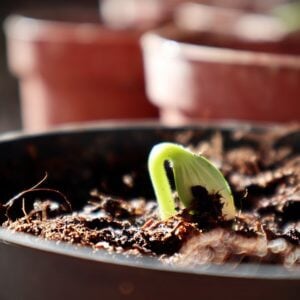
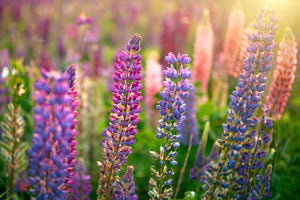
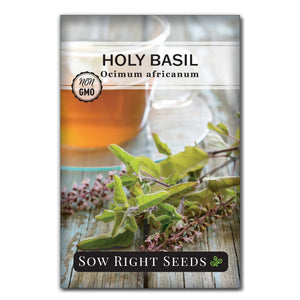
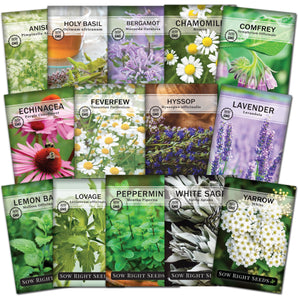
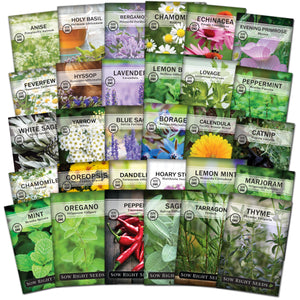
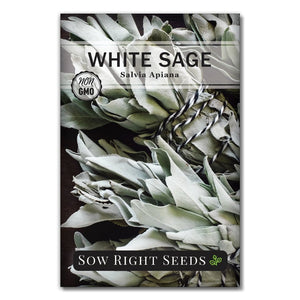
Leave a comment